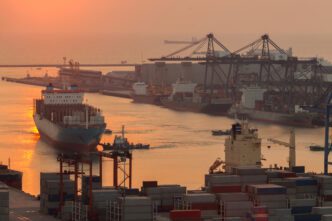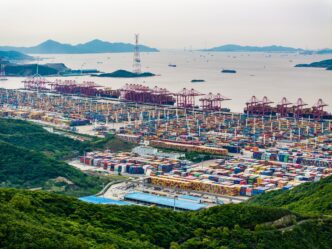President Donald Trump has announced new tariffs that may lead to increased prices for clothing, mobile phones, furniture, and various other goods. This development threatens to end the era of affordable consumer products that Americans have enjoyed for approximately 25 years prior to the pandemic. The administration’s strategy aims to boost high-paying manufacturing jobs by relocating production back to the United States. However, this approach presents significant political risks and may take years to manifest, particularly in light of challenges such as the automation prevalent in modern factories.
Despite a recent temporary suspension of steep tariffs on around 60 nations for 90 days, the average U.S. duties have surged compared to a few months ago. The administration has introduced a 10% tariff on all imports, with Chinese goods facing a substantial 145% levy. Additionally, steel, aluminum, cars, and about half of the imports from Canada and Mexico are subject to 25% tariffs. Consequently, the average U.S. tariff rate has skyrocketed from under 3% before Trump’s presidency to approximately 20% today, marking the highest level since at least the 1940s.

The imposition of these high tariffs is likely to reverse decades of globalization, which has been instrumental in reducing costs for American consumers. Economists note that other factors, like factory automation and technological innovation—especially in electronics—have also contributed to lower prices. However, imports have played a crucial role in keeping prices competitive by leveraging lower labor costs abroad and stimulating efficiency among U.S. companies.
Bank of America predicts that these new tariffs could increase car prices by an average of $4,500, even if automakers absorb some of the tariffs’ impact. This rise follows significant price hikes in recent years, pushing the average cost of a new car to a steep $48,000. Data from ShipHero LLC, a company facilitating merchant shipments, indicates that retailers have already begun raising prices in anticipation of the tariffs. Prices for various goods increased by 3.9% shortly after the latest tariff announcements.
Historically, the period from the mid-1990s to 2020 saw inflation average below 2.2%, with American shoppers benefiting from stable or reduced costs in categories such as clothing and furniture. However, the Trump administration has acknowledged the potential for higher prices resulting from the tariffs, with Treasury Secretary Scott Bessent suggesting that cheap goods are not the cornerstone of the American dream. This stance comes amid the backdrop of the worst inflation spike in four decades, impacting essentials like groceries, gas, and housing.
While many consumers express willingness to pay more for U.S.-produced goods, challenges remain in shifting production back to the U.S., partly due to the frequent changes in tariff scope. The high duties on Chinese goods suggest that manufacturers might route products through other countries to incur lower tariffs. The furniture industry, for instance, may not see significant price increases soon, as many companies already source from countries like Vietnam or Malaysia, maintaining a global procurement strategy.
The Bottom Line
The implementation of these tariffs represents a significant shift in U.S. trade policy, with potential repercussions for consumers, industries, and the broader economy. For consumers, the anticipated price increases could lead to higher costs of living, particularly affecting household budgets. The move may also influence purchasing decisions, with some individuals opting for fewer but higher-quality U.S.-made products.
For industries, the tariffs present both challenges and opportunities. While the hope is to rejuvenate domestic manufacturing and create jobs, the reality of production costs, automation, and existing global supply chains may complicate these efforts. Additionally, businesses may need to adapt quickly to shifting trade landscapes, potentially diversifying sourcing strategies to mitigate tariff impacts.
Overall, the tariffs highlight the complex interplay between trade policies, consumer prices, and economic growth. As the situation evolves, stakeholders must navigate this new landscape, balancing the benefits of domestic production with the potential for increased costs and market disruptions.








